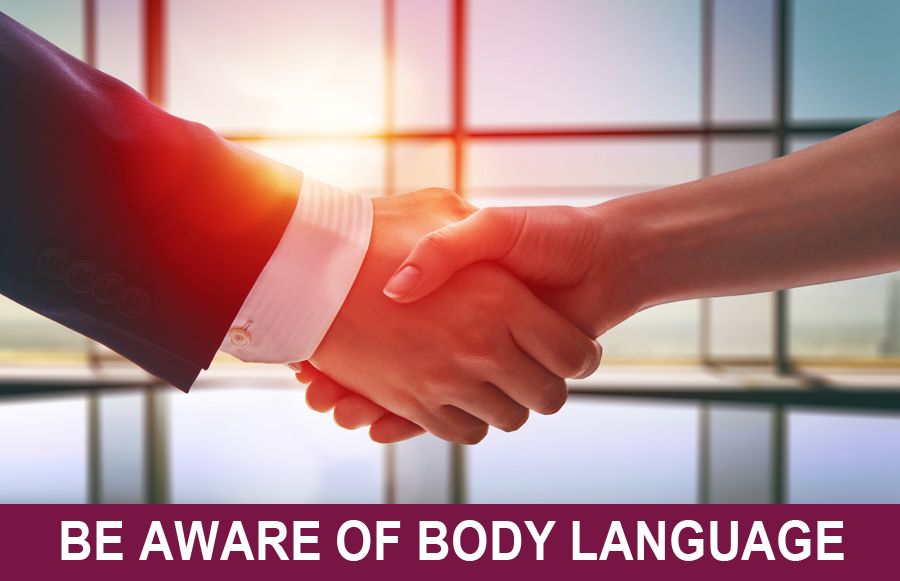CHRISISMS
A fortnightly pearl of wisdom to fast track your success
Chrisism #100 - Be Aware of Body Language
24 September 2019
There have been numerous books written on the subject of body language and this Chrisism is certainly not designed to cover the full gamut of this particular science. What I want to focus on today are what I believe to be the most important aspects of body language in the crucial initial stages of a first client meeting. In Chrisism#85 I talked about the relative importance of the three component parts that make up face to face communication, namely ‘what you say’, ‘how you say it’ and ‘non verbal communication’ i.e. body language, and suffice it to say that 55% of face to face communication is non verbal. When meeting someone for the first time, we also need to be very aware of the adage “you never get a second chance to create a first impression”, and that first impression is formed very quickly if not immediately. Whether you like it or not, the very first impression you create will always be a visual one. You know how it works because you have been in your client’s shoes when you met with your accountant, solicitor, doctor or dentist for the first time. The moment you laid eyes on him/her you either thought:- “Oh, he/she looks nice” or “I don’t like the look of him/her”! So it’s crucial that, when greeting someone for the first time, you have a (genuine) smile on your face and are therefore exuding ‘warm fuzzies’ not ‘cold pricklies’. So let’s talk about the handshake. When you greet your client (male or female), you will extend your hand and deliver a nice firm handshake whilst saying something like: “Hi, Chris Unwin (you may want to use your name here!) – nice to meet you. Follow me through.” The first key thing here is the firm handshake. When offering a firm handshake to someone, you will get a handshake in return which can often tell you something about this person in a business context. If you get a nice firm handshake in return, then this quite often indicates that this person is quite good at making decisions. However, if you get the ‘limp wrist’ or ‘wet fish’ handshake, this can often indicate the opposite i.e. they are not very good at making decisions. Finally, you make get the ‘bonecruncher’, which they would like you to think means they are totally confident and secure, but often signifies the complete opposite. If you let this person take control, then they will, but as long as you take control from the word go, they are actually happy to be led. The “Follow me through” means that you should have the client follow you to wherever your meeting is taking place, thereby taking control from the start. So this brings us to the set up for the meeting i.e. the furniture being used and the physical positioning of you and your client(s). Please refer to Chrisism#48 for what I believe to be the ‘golden rules’ in this context. Whatever the furniture being used is, be it a round table or rectangular table or desk, the most important thing to ensure is that you and you client(s) are sitting alongside each other not across from each other. This physical positioning is crucial in that it is designed to denote working together, collaboration, teamwork and a “we” situation rather than a territorial set up, confrontation, a “you and me” situation with a huge barrier between the parties. Lastly, it is worth pointing out some of the classic negative body language signals you may encounter when you first sit down with someone you haven’t met before. I have to say that I am a bit sceptical about over interpreting individual body language signals, but when you are confronted by the following cumulative negative body language signals, you need to make sure you don’t launch into any business discussion until you have succeeded in breaking down these signals and making the client nice and relaxed. The most obvious signals are arms crossed, fists clenched, inside shoulder turned away and inside leg crossed. This adds up to a classic “What’s it all about?” attitude and you would be advised to get them talking about themselves, which is usually the best way to relax them. |





